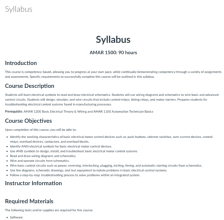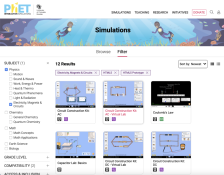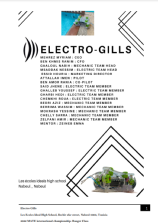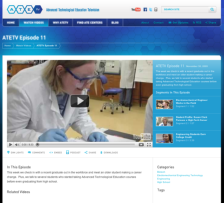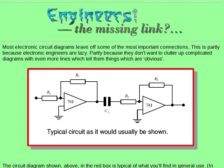Browse Resources
Resources |
|---|
Course Description:
This course, developed by Bridgerland Technical College, teaches students about electrical symbols and schematics. In the course, students use wiring diagrams and schematics to wire basic and advanced control circuits. Students also design, simulate, and wire circuits that...
The Materials Science and Technology Teacher's Workshop (MAST) provides this experiment on electrical resistance and glass. The module involves breaking the glass from a light bulb and then measuring the resistance across the bulb's electrodes. The lesson includes a step by step explanation of the...
In this animated and interactive object, students read an introduction to electrical quantities, units, and symbols and test their knowledge in a matching exercise.
The University of Colorado's simulation and animation website features a number of simulations related to Electricity, Magnets, and Circuits. Topics covered by the many available simulations include balloons and static electricity, magnets and electromagnets, Faraday's Law, radio waves &...
This 26-page report, published by Les Ecoles Ideal High School, describes the design and construction of the underwater remotely operated vehicle (ROV) created by the Electro Gills team for the Ranger Class of the 2022 MATE ROV competition. MATE ROV is a global competition that challenges STEM...
This lab, presented by the National Nanotechnology Coordinated Infrastructure, covers the concept of chemical reactions. Students will learn how "a flow of electrons allows cations in solution to revert to a solid state while plating an object" as well as "the process which allows the ions of the...
This is an interactive Java tutorial, created by Michael W. Davidson of Florida State University, covering the principles of electromangentic wave theory. The user is able to adjust variables such as amplitute and wavelength and observe immediately the effects on the animated screen.
The ATETV project delivers web-based videos to connect students to careers in advanced technology. This episode of ATETV examines the work of an electromechanical engineer, profiles student Susan Clark as she pursues a high-tech career, and high school students earning college credit by taking...
Description:
This learning module is provided by Work-Ready Electronics and covers electronics careers, including job pathways. Work-Ready Electronics modules are intended to be used either independently or integrated with current electronics curricula in college programs. This module is divided...
This site provides a comparison of typical and more informative circuit diagrams. "Most electronic circuit diagrams leave off some of the most important connections." This site show a typical diagram and then a more complete diagram that shows common missing wires.
|
| ← PreviousNext → |
